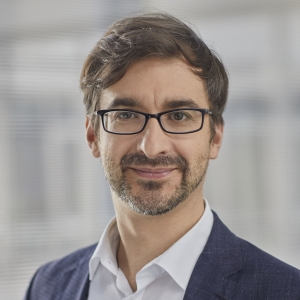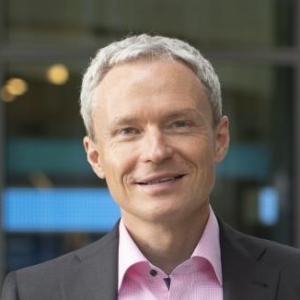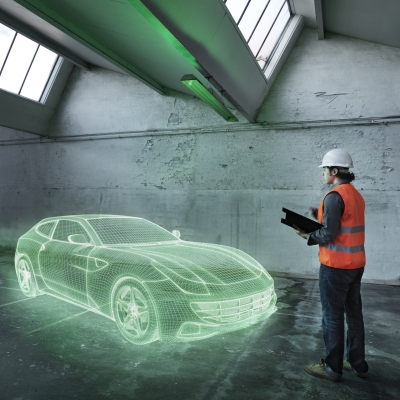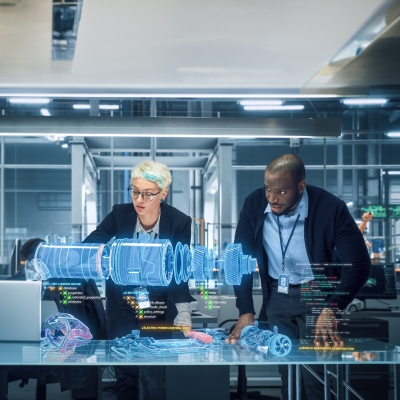EcoDesign: Pioneering Sustainability in Product Development

EcoDesign: Pioneering Sustainability in Product Development
As businesses face increasing regulatory pressure and consumer demand for sustainability, EcoDesign emerges as a critical approach to minimize the environmental footprint of products and services. By embedding ecological considerations into the design phase, companies can not only ensure compliance but also drive innovation and gain competitive advantage.
What is EcoDesign?
EcoDesign refers to the integration of environmental considerations into the design and development of products and services. It emphasizes on the entire lifecycle – raw material extraction, production, usage, and disposal – aiming to reduce resource consumption, lower emissions, and enhance recyclability.
EcoDesign is essential for companies looking to align with sustainability goals and meet evolving regulatory requirements while addressing the growing consumer preference for eco-friendly products.
Why EcoDesign matters: key benefits
For organizations, adopting EcoDesign principles offers multiple advantages:
- Competitive advantage: Sustainable products open new market opportunities and enhance brand image
- Cost optimization: Lower resource consumption in production reduces operating costs
- Transparency: Improved engagement across the supply chain ensures better data quality on a product’s lifecycle, helping businesses make informed decisions
- Sales enablement: Many customers are willing to pay a premium for sustainable products
What is required?
The Ecodesign for Sustainable Products Regulation (ESPR), which took effect on 18 July 2024, plays a pivotal role in the European Commission’s efforts to promote environmentally sustainable and circular products. Building on the EU's 2020 Circular Economy Action Plan, this regulation aims to increase the circularity of material use and support the EU’s climate and energy efficiency objectives by 2030.
With the ESPR now in effect, manufacturers need to proactively redesign products to comply with these standards. Delaying action could result in non-compliance and missed opportunities to capitalize on the growing demand for sustainable products.
In addition to the ESPR, various regulations worldwide, such as the Chemical Substances Control Law and the Plastic Waste Management Rules, are driving organizations to redesign their products to mitigate use of hazardous substances and reduce plastic waste. Meanwhile, regulations like California's Title 20 and the Greenhouse and Energy Minimum Standards Act are establishing minimum efficiency requirements for energy and water use, reinforcing the global shift towards resource-efficient products.
Who does EcoDesign apply to?
EcoDesign principles apply to all industries, from electronics and automotive to healthcare and industrial equipment. Any product that interacts with natural resources or energy can be redesigned to reduce its environmental impact, making this approach highly adaptable across sectors.
How to implement EcoDesign?
Implementing EcoDesign involves several strategic steps:
- Set clear EcoDesign goals
Align your design efforts with sustainability objectives, whether it’s achieving carbon neutrality, fostering a circular economy, or reducing resource use
- Cross-functional collaboration
Like compliance strategies, EcoDesign demands a coordinated approach involving R&D, product management, supply chain, legal, and sustainability teams
- Life cycle assessment (LCA)
Conduct LCAs to evaluate environmental impacts at each stage of the product lifecycle and refine design criteria to minimize negative effects
- Pilot and scale-up
Start with a pilot project to test EcoDesign criteria within select business lines. Once successful, scale up EcoDesign principles across the organization
- Set KPIs and track progress
Establish relevant metrics to measure the success of EcoDesign initiatives, such as Product Carbon Footprint (PCF) and Environmental Product Declarations (EPD)
Overcoming challenges
EcoDesign implementation often faces hurdles, such as data availability and quality issues, stakeholder resistance, or difficulty in adapting current product development processes. However, these challenges can be mitigated through:
- Collaboration between legal and technology teams
- Transparent communication with all stakeholders
- Data-driven decisions based on thorough lifecycle analyses
EcoDesign as a business opportunity
Beyond compliance, EcoDesign presents a unique business opportunity. Companies can position themselves as sustainability leaders, create new revenue streams, and offer innovative solutions such as circular economy use cases. With growing consumer interest in green products, businesses that implement EcoDesign can gain a significant competitive edge.
How Siemens Advanta can help?
At Siemens Advanta, we can provide end-to-end support for companies looking to adopt EcoDesign principles. Our services include, but not limited to:
-
Developing customized EcoDesign frameworks and integrating them into Product Lifecycle Management (PLM)
-
Conducting life cycle assessments and producing Environmental Product Declarations (EPD)
-
Supporting the implementation and scaling up of EcoDesign across the organization
Our tailored approach helps clients navigate regulatory requirements while capturing business opportunities in the growing market for sustainable products.
If you want to learn more about our offerings regarding EcoDesign, please download the detailed presentation on the topic here:
Industry experts




Organizational Transformation Management

Organizational Transformation Management
Deep expertise on how to transform organizations
Siemens Advanta supports throughout the transformation starting with definition of the aspiration level and levers, setting up the governance and – striving for sustainable change – consulting and supporting in all aspects of the execution.
Siemens Advanta aspires to support its customers from the beginning of their transformation journey and goes beyond standard change management. Based on a sound organizational understanding and domain know-how, transformation targets are continuously checked against formal and informal structures and capabilities. In the execution phase, our customers benefit from vast (methodological) experience that enables us to set up the right governance and achieve sustainable change by putting your people in the center of our efforts.
- Organizational analysis against transformation targets
- Change impact analysis
- Governance and project/ program set-up
- Transformation/ change roadmap including comprehensive stakeholder management
- Realistic transformation targets
- Organizational alignment through all hierarchies
- Clearly evaluated change impact for each target group
- Fast, comprehensive, and monitored adoption through integrated change management
Our industry leaders



IT Security Certification for Automation Products and Solutions as a Competitive Advantage

IT Security Certification for Automation Products and Solutions as a Competitive Advantage
Better protection of critical infrastructure
Once the domain of production environments, industrial automation and control systems (IACS) are now ubiquitous in critical infrastructure, such as water and wastewater systems, power supply, transport and logistics, and food supply. Compromised cybersecurity on this critical infrastructure could result in sustained bottlenecks in supply chains and significant disruptions to public safety. To protect against such scenarios, the International Electrotechnical Commission published IEC 62443, a series of standards that addresses cybersecurity in automation and control systems.
WAGO called on us to consult its R&D units on how to prepare for IT security certification as specified in these standards.
Built-in cybersecurity
To meet market needs and customer requests for secure products, the company decided to design its hardware and software accordingly. The goal is to ensure that products do not hold any weak points – or in other words, that products are “secure by design.” A secure-by-design approach is increasingly important as a result of the increasing fusion of IT and OT, which has given rise to Industry 4.0 and the Internet of Things.
As per IEC 62443, cybersecurity must be implemented during product development, and technical certification bodies require proof of adherence on a yearly basis. However, WAGO did not have the necessary processes in place to deliver on these requirements. And with a tight timeframe, success hung in the balance.
Maintaining R&D’s profitability and performance
We provided thought leadership and hands-on technology consulting to WAGO’s R&D unit. This consisted of bringing in Siemens Advanta’s experts to apply IT security concepts and defining modern processes so that product architecture can be designed in line with the requirements. All the while, the focus was on solutions that maintained WAGO’s profitability and performance. An example here is fulfilling the standard while avoiding costly overdesign. Our service also extended to continuous collaboration with technical certification bodies.
The collaboration with us has paid off for WAGO. Within just 18 months, WAGO has achieved its first milestone with the certification of its processes according to IEC 62443. Currently, the company is working on a product that adheres to the standard and will soon be made available to clients. This accomplishment sends a clear message to the market and sets the stage for business growth. Furthermore, applying IEC 62443 ensures a consistent security concept across the entire lifecycle and with all stakeholders, such as the asset owner and system integrator.
Yet this isn’t a one-off for WAGO. The company’s experts will be able to implement their newly won expertise in future projects too. Thanks to a streamlined process, yearly reports for certification bodies can be produced very efficiently.
Adherence to IEC 62443 is particularly important as governments around the world start introducing legislation calling for cybersecure designs in IACS. One example is the European Union’s Cyber Resilience Act, which could go into effect as early as 2026. WAGO has already taken a huge step toward fulfilling this and any legislation that may come.
Dive deeper: Related content
Our industry leader

Driving digital transformation and open innovation with a strong ecosystem
Tune in to uncover what the world of open innovation ecosystem holds for the future.
How can cross-collaboration and open ideation help deal with industrial uncertainties? Get your answers from Aymeric Sarrazin and Peter Körte.
Find us also on your favorite Podcast APP:
Apple Podcast, Google Podcast, Siemens.fm,
Stitcher, Spotify (log in to listen on desktop)
Networks and Data Ecosystems Essential for the MedTech Industry’s Circular Future

Networks and Data Ecosystems Essential for the Medtech Industry's Circular Future
The concept of circular economy is not limited to only manufacturing or waste management sectors – it is crucial for every industry, especially MedTech and healthcare. Owing to increasing environmental damage and pollution rates caused by large corporations, other equally responsible sectors have been overlooked in the public domain.
MedTech is any technology used to save the lives of people suffering from a wide range of conditions. It can range from syringes and latex gloves to heart values and pacemakers or replacement joints for knees and hips to total body scanning machines.
The future of MedTech lies in the power of networks and data ecosystems, enabling the industry to build a circular and resilient healthcare ecosystem. Data ecosystems include various actors, like services, and software applications that use data to share and utilize it economically or socially. In many circular economy scenarios, this involves the network or the networking of companies. “By making these changes, transformation of the medical device industry to a more circular economy would advance the goal of providing increasingly complex care in a low-emissions future.”
What does a circular economy look like for MedTech?
In the following article we will provide experience-based insights on why MedTech companies must embrace networks and data ecosystems to navigate this complex landscape. Furthermore, we will show how companies managed to harness the power of connectivity and data-driven insights to meet the demands of a circular economy and beyond - ultimately thriving in a sustainable future.
Not If but when: Five reasons why the circular economy is crucial for MedTech
Even with these barriers, our experience shows that there are several significant reasons why MedTech companies need to invest in circularity, including:
- Regulatory compliance: By closing raw material loops and thereby reducing the product carbon footprint, the circular economy is a crucial element in a wide range of relevant frameworks and regulations (e.g., UN Sustainable Development Goals, Paris Agreement, Green Deal, etc.) and therefore an imperative to avoid fines and penalties.
- Resource Efficiency and Cost Savings: In times of rising material prices, using recycled or reclaimed materials leads to cost savings in raw material procurement, production, and waste management thereby improving the company's profitability and operational efficiency.
- Resilience and Supply Chain Stability: By reducing the dependence on scarce resources and minimizing vulnerability to price fluctuations or supply chain disruptions, circularity contributes to mitigating the risks associated with decoupling, climate change, resource depletion, and economic instability.
- Access to Sustainable Financing and Investors: Companies that embrace circularity are more likely to attract sustainable financing options and gain the interest of investors seeking companies with strong ESG performance, ultimately providing access to capital for growth and expansion.
- Development of new business models: Circularity drives companies to innovate in product design, business models, and operational processes leading to the generation of new revenue streams and services that provide ongoing revenue instead of relying solely on one-time sales.
Catena-X: The crossroads of data, infrastructure, and service
Let’s explore how circularity is improving industries like Automotive and ways in which we can apply these insights to the MedTech industry.
Increasingly stricter environmental regulations regarding electric mobility, rising prices of raw materials, and supply chain shortages provided an impetus/incentive for the German Association of the Automotive Industry (VDA) to start the development of Catena-X in 2020. This became one of the first and biggest circularity-focused digital ecosystems that connects companies throughout the automotive value chain.
The mission of Catena-X is to enable the digital flow of information across the entire supply chain from manufacturers to suppliers and service providers. Catena-X develops a digital map of the circular economy in the automotive industry - with more than 2,000 partners and across all levels of the value chain. This digital infrastructure enables secure and trusted end-to-end data exchange, facilitates supply chain optimization, supports new business models, and promotes innovation.
Data is a fundamental building block of the circular economy. It refers to the structured and standardized information exchanged within the ecosystem. This data includes product information, supply chain data, production data, vehicle data, and customer-related information. The data is collected, stored, and shared in a standardized format, enabling interoperability between different systems, and facilitating seamless collaboration between partners.
Another essential building block for the digital mapping of value-added processes over the entire life cycle in Catena-X is the European Union’s Digital Product Passport (DPP). This tool creates transparency and unlocks circularity proposed by the European Commission that will share product information across the entire value chain, including data on raw material extraction, production, recycling, etc. Digital product passports function as a holistic digital twin and play a crucial role in closing the information loop by providing actionable insights on ownership, materials, and lifecycle events.
The Battery Passport, a version of the DPP, represents the first use case of collecting information across different companies starting with the extraction of raw materials which was vital for Catena-X as it laid the groundwork for key issues in transparency and data availability. It even captured individual battery cells composition and high voltage storage. Moreover, it collected dynamic data from the use phase to the dismantling and recycling processes until the final life cycle stage.
The Battery Passport was key in facilitating the rapid scaling of sustainable, circular, and responsible battery value chains to meet the targets of the Paris Agreement through electrification of the transport and power sectors. And these accomplishments happened during the development state of the Battery Passport. In fact, a Battery Passport prototype was officially released by the Global Battery Alliance during the World Economic Forum’s Annual Meeting in Davos in January 2023.
The information collected is used for more precise calculation of reference values, the optimization of production processes and data-based decisions, (e.g., whether a battery can be used as stationary storage unit at the end of a vehicle's life cycle or which measures are suitable for achieving the highest possible recycling rate).
The infrastructure of Catena-X consists of the technical framework and digital infrastructure necessary to support data exchange and connectivity. It includes standardized communication protocols, Application Programming Interfaces (APIs), cloud computing resources, and security measures. This infrastructure enables the seamless flow of data and information across different stakeholders in the automotive value chain.
With transparency along the value chain and the associated knowledge regarding the origin of materials as well as the product carbon footprint, Catena-X members are well prepared to tackle future regulations and are already seeing savings per year by avoiding import duties and penalty payments.
Catena-X also encompasses a wide range of value-added functionalities and applications built on top of the infrastructure and data components. These services include analytics, predictive maintenance, supply chain optimization, digital twin simulations, and other digital tools that enhance operational efficiency and decision-making. By leveraging shared data and infrastructure, these services enable stakeholders to gain insights, optimize processes, and create new business models.
In addition to the effects on productivity/savings, Catena-X enabled the pioneers of the battery passport to communicate with one voice to the government institutions and thereby influence the establishment of standards.
Connecting Catena-X to the MedTech industry
Our experience with Catena-X demonstrates that it is not a question of if - but rather of how quickly - one can start building comparable circular structures. It will indeed take time. In fact, it took three years to establish Catena-X as a case study for the circular economy despite this project having the highest prioritization at the board level, the establishment of cross-divisional teams, and the empowerment of IT systems. It is critically important to not underestimate the time needed to adequately ensure the network connectivity and data availability required to implement circularity in an industry.
Catena-X should serve as an example to the MedTech sector that companies can only succeed in meeting stricter requirements (such as CO2 emissions standards, recycling quotas, etc.), with the help of circular material and raw material cycles by working together with partners along the value chain.
The automotive industry shows that cooperation between OEMs and suppliers can happen and that continuous data flows can be established along the product life cycle thereby creating value for all involved. At the same time, it is evident that technologies such as digital twin or product passports play a decisive key role along with the alliance of companies.
Importantly, Catena-X serves as an example and lessons and proof of concepts learned from it, in our opinion, can be transferred and adapted to other industries. . Even though Catena-X has a strong focus on current activities in the EU, we believe the findings can also be applied to other regions such as the USA or APAC. Technologies and solutions such as the digital twin or product passports can be established and used independently of regional markets.
Making circularity a reality in MedTech
According to a recent Health Affairs report, “Transition to a circular economy begins with a commitment to high-value care. This broader framework can drive efficiency of facilities operations with respect to energy and waste management and can nudge clinicians to be mindful of resource consumption and to select environmentally preferable drugs and devices where choices exist. Adoption of such high-value principles in procurement will foster circular and ethical supply chains.”
But the transformation to a more sustainable or circular economy can’t just be for philanthropic reasons. There is a strong business case for these changes to ensure competitive advantages for MedTech companies.
Even if all the regulations and adoption drivers are not applicable to your organization today, turning a blind eye to the need to change will have adverse effects in the future. Decisions made today influence whether MedTech companies can contribute significantly to a sustainable healthcare system while remaining at the forefront of innovation.
Our contributors

Author


End-of-Life/Recycling-Management

End-of-Life/Recycling-Management
A multitude of external factors, such as increasing commodity prices, stricter regulatory requirements, and material shortages due to geopolitical conflicts (decoupling), turn the sustainable handling of products towards the end of their life cycle into a decisive competitive factor. Derived from practical expertise, our consulting offering helps efficiently secure your supply and market access by closing the circular loop.
- Developing effective and profitable end-of-life programs to support growth and sustainability
- Ensuring long-term access to competitively priced strategic secondary materials
- Creating partnerships and ecosystems to enable circular models
- Leverage R-strategies (e.g., reuse, reman, recycle) to preserve components and materials in a closed loop
- Reduce your carbon footprint through increased use of recycled materials
- Increase resilience of your supply chain through reduced dependency on primary resources
- Grow revenue through new circular business models (e.g., as-a-service, repair, remanufacture)
- Improve brand reputation and customer loyalty through sustainable practices
Our industry leaders


Circular Economy

Circular Economy
A growing concern for sustainability, combined with raw material scarcity, necessitates closing the loop and developing new circular solutions. Our consulting services can assist your business in navigating this transformation. With decades of expertise in sustainability, product lifecycle management, and product architecture design, we can support you in implementing solutions that not only benefit the environment but also increase profitability and stakeholder value. Contact us today to find out how we can help your business become a leader in circularity.
- Definition of appropriate R-Strategies for designing products, components, and services
- Regulatory check and maturity assessment
- Product (architecture) design strategy
- Determine R-strategies for your specific situation - as each product and service requires a tailored approach
- Develop a best-fit modular architecture to reflect circular requirements
- Provide your engineers with guardrails to develop more sustainable products and services
- Use best-in-class technology to increase your sustainability
- Gain a competitive advantage by being at the forefront of complying with upcoming regulations
Our industry leaders



Future Product Development

Future Product Development
Our service improves complexity management, time to market, and the development of software-intensive products. To achieve this, we use advanced processes, methodologies, and cross-industry expertise coupled with a human-centered approach to enable your business to efficiently create products that meet and exceed your customers' needs.
- Systems Engineering Methodologies
- Integration of state-of-the-art methods (e.g., advanced rapid prototyping and virtualization)
- R&D assessments for product, organizational, and digital capabilities
- Reduce time to market and gain a competitive edge
- Improve customer satisfaction and increase product innovation
- Minimize development costs and resources
- Master system complexity
- Rapid organizational adoption/change
- Embrace new technologies and methodologies
- Commitment to developing software-centric products
- Strategic ambitions for the future portfolio
Our industry leader

Change Management

Change Management
Siemens Advanta has a great track record of successful change initiatives, from organizational setup changes to business turnarounds and implementing new business models. If you have a strict timeline and set target dates, we will implement well-planned and defined strategies that have been proven to yield the best results.
- Clarify: Future and current state
- Design: Holistic change program
- Act: Implementation of the change desired
- Sustain: Anchoring of change long-term
-
Ensure productivity
Lower the decrease in productivity as teams adjust to the new organizational structure or workflows. -
Secure retention rate
Lower the expected turnover rate as the transformation may not align with the expectations or career goals of all employees. -
Achieve buy-in for the transformation
Buy-in may be challenging to achieve regarding the need for digitsl transformation, the advantages of the new operating mode, the fairness and involvement in the transformation process, and clarity about future positions. -
Safeguard change readiness
Make sure that people are prepared in terms of change history, stress levels, capabilities and resources committed.
Our industry leader

Condition-Based Asset Maintenance

Condition-Based Asset Maintenance
We helped the client transition from time-based to condition-based and predictive maintenance through data analytics and agile software development. By using advanced analytics and machine learning algorithms, predictive maintenance can help detect potential issues before they cause breakdowns or production delays. This proactive approach can reduce maintenance costs, minimize equipment downtime, and improve overall operational efficiency, making it an indispensable tool for modern businesses.
- Lack of visualization on asset performance and no real-time condition monitoring.
- No data-driven decision making about asset maintenance possible.
- High administrative work due to paper-based maintenance schedules.
The solution was created and iteratively refined in the environment of a pilot plant following the listed steps:
- Assessment of client's hypotheses regarding main issues and root causes based on data analytics.
- Definition and prioritization of use cases and respective software functionalities.
- Agile software development of a condition-based asset monitoring solution using Microsoft Azure Cloud and Edge components.
- Integrated change management as an essential part of solution creation and implementation.
- Application MVP as a basis to switch from time-based maintenance to condition-based maintenance and predictive maintenance.
- Foundations built to generate added value through artificial intelligence and machine learning over time.
- Involved and enabled client organization ready for further solution development and rollout in all plants.
Dive deeper: Related content
Our industry leader

Pagination
- Page 1
- Next page


 Contact Us
Contact Us





